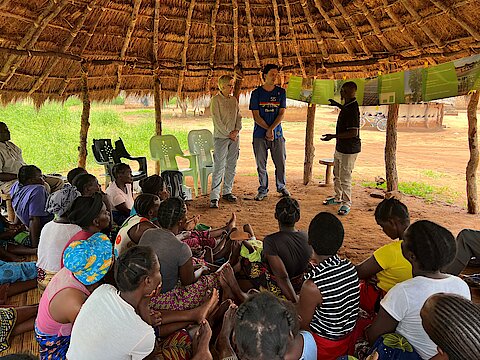Climate Village Lab
The emission of harmful gases accelerates climate change, while tropical rainforests act as one of the most important carbon sinks. Their preservation and protection are crucial to reducing temperature rise and biodiversity loss.
Especially in the poorest countries of the global South, where the most biodiverse forest areas are located, poverty and forest destruction go hand in hand: In their desperation, people destroy the forest to create agricultural land and fuel their homes. Particularly in the poorest countries of the Global South, where the most biodiverse forest areas are located, poverty and deforestation go hand in hand: in their desperation, people destroy the forest to gain agricultural land and charcoal.
The Climate Village Lab in Zambia aims to test measures in three participating villages that combine climate and biodiversity protection with socioeconomic development. Like in a laboratory, the project will support village communities in designing and implementing sustainable development activities that aim to reduce greenhouse gas emissions, increase household income beyond and create a data basis for the development of biodiversity certificates.
The measures will be developed together with the local people, with the residents' own contributions being important to ensure a high degree of identification and sustainability. The project has selected seven key measures:
The project has selected seven key measures:
- Irrigation and fencing of communally used farmland
- Establishment of agroforestry cooperatives
- Electrification of all households and provision of electricity for small businesses
- Supported natural regeneration on a trial area
- Protection of existing forest areas
- Development of a mechanism for “biodiversity credits”
- Performance-based payments to village funds (Climate Village Funds)
The accomponying monitoring will provide reliable and meaningful data on the success of the measures implemented at the end of the project. In addition to improving local living conditions, the project aims to provide insights into the costs, benefits, and acceptance of the various measures. Based on these findings, further projects can be planned on a larger scale.



Partner
Programme Management
Pia Puljanic
Image Credits:
01. Image: Source: © Loliwe Phiri/ GEOsdR
02. Image: Source: © Ines Possemeyer / GEOsdR
03. Image: Source: © Ines Possemeyer/ GEOsdR